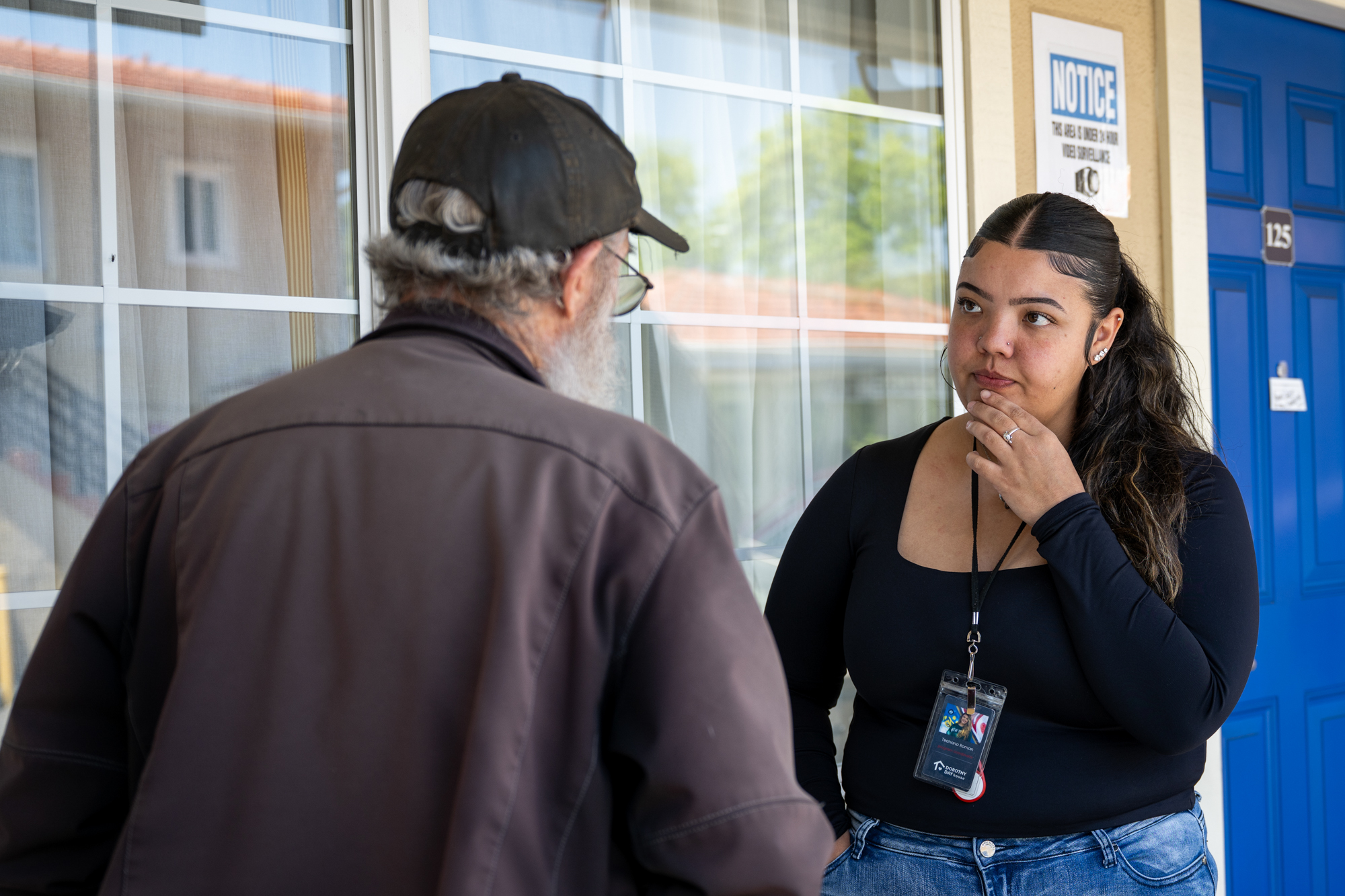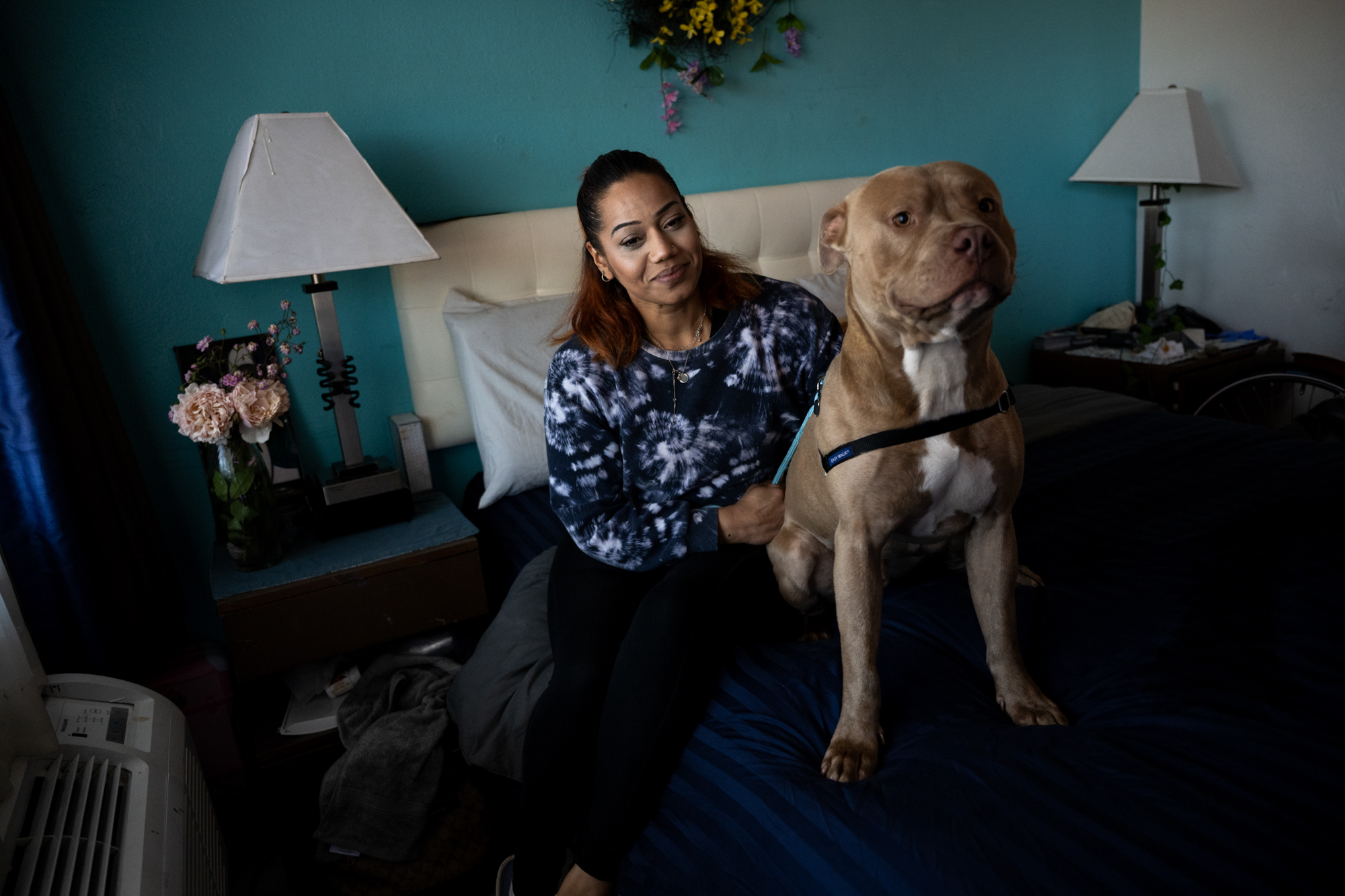In 2023, police were called to the area around 250 times, and there were 20 reported fires, according to city documents. Neighbors complained to the city council that there were “human feces just about anywhere you dare to look,” “a stabbing,” and fights resulting in “retaliatory arson.”
The city provided porta potties, dumpsters, mobile showers and laundry facilities, and cleared nearly 40 tons of debris over the years. Still, by early 2024, officials deemed the area an imminent health hazard, citing used hypodermic needles, rotting food, a rat infestation and waste-contaminated storm drains.
A few months later, even famously liberal Berkeley had had enough and city leaders directed staff to focus on cleaning up the area. They started laying plans to close the encampment for good and, ideally, house its inhabitants.
Peter Radu, who oversees Berkeley’s Homeless Response Team, knew they would need to try something different. Past outreach efforts offering shelter to the residents had largely failed. A staff report noted engagement wasn’t successful because many of the RV dwellers did not consider themselves homeless.
Hall explained it this way: With an apartment out of reach, her RV offered a degree of privacy, security and independence, not to mention a valuable asset that could be traded for cash. Accepting temporary shelter risked all that.
“They can’t guarantee you housing once you get in there,” she said, expressing concern that she might be forced to move out of the shelter before a permanent home opened up. Her family could land back on the streets and worse off if they gave up their campers.
So, Radu and his colleagues decided to test a new strategy: cash for RVs. If the participants agreed to move indoors, they would get $175 per linear foot of RV, or about $6,000 for a 35-foot vehicle. They’d receive 15% of the payout when they moved into a motel shelter and the rest after they tried out the shelter and their RV was towed. If residents decided not to stick with the program during the trial period, they’d still pocket the initial payment and keep their vehicle.
The approach was modeled after a pilot in Marin County that was itself inspired by a cash incentive meant to get boat dwellers out of Richardson Bay. It had a lot of promise, said UCSF Benioff Homelessness and Housing Initiative Director Margot Kushel, who has studied the needs of people living in large vehicles.
“The city designed this to really gain people’s trust and to make sure that people were not left worse off than they were when they started,” she said. She called Berkeley’s program “quite innovative” and said it could prove valuable in the future as the state contends with RV homelessness.

As cities work to clean up homeless encampments under increasing pressure from Gov. Gavin Newsom and housed residents, RV communities present a distinct — and notoriously difficult — challenge, especially with more and more Californians taking up residence in them.
Over half of Alameda County’s unsheltered homeless population now lives in some kind of car or RV, but strategies for managing and resolving this unique form of homelessness are lagging.
In San Francisco, attempts to clear RV encampments have led to widespread public outcry, and after moving to ban overnight RV parking, the city reversed course under pressure from advocates. Now, Mayor Daniel Lurie is again proposing to ban the vehicles, this time with a similar offer to Berkeley’s, as part of a broader plan to get motorhomes off the streets.
Kushel’s research found that people living in RVs are reluctant to give them up for anything short of permanent housing — a dilemma when there’s little to offer.
Berkeley officials designed their strategy with that in mind, but residents still had reservations.

“It sounds good,” Patrick said, “but that’s what makes me a little leery — maybe it just sounds too good to be true.”
Hall was wary, too. What she didn’t know about the motel program gave her pause. “[You] don’t know if it’s going to be safe,” she said. “You’re going in with strangers.”
But so did what she knew. “You can’t have anybody visiting you,” Hall said, “You can’t cook in the room.”
For Guzman, though RV living never felt truly safe, the possibility of ending up on the streets in a tent, even less protected from the elements, was even more terrifying.
To get the program to work, city staff and nonprofit outreach workers spent roughly three months coaxing residents, explaining their offer, listening to concerns and making accommodations to the shelter policies where possible. A one-dog-per-person rule stretched to allow four dogs in one room; friends were allowed to bunk together.

“All of that really matters,” Radu said. But ultimately, it was the city’s cash offer that overcame many of the residents’ reservations.
Guzman and her husband ended up accepting roughly $3,000 for their vehicle, which they promptly put into savings. That gives them some reassurance, she said, in case they get kicked out or the program ends. “We don’t have another RV to go to or a Plan B, so we gotta have something put aside for that, just in case.”
Patrick and his wife also took the city up on its offer. For them, it solved a logistical problem: What to do with their motorhomes if they moved into a shelter? They have two cars and two RVs and stand to get about $4,900 for just one of them.
“The buy-back program kind of makes everything sort of doable because it gives me a little money in my pocket, and I don’t have to worry about my stuff getting towed because it’s not my stuff anymore,” he said.
The Halls, on the other hand, opted out because, as Fannie Hall said, “I’d rather stay where I’m safe and I’m familiar with.” But they were among the exceptions.

A total of 36 people and 26 dogs moved from the encampment into a city-leased motel in central Berkeley beginning in January. Of the 32 vehicles workers encountered on Second Street during the closure process, just three remain on the streets.
“By that metric, it was a resounding success and something that we’re looking to expand upon hopefully in other encampments,” Radu said.
Kushel and her team are now evaluating the program’s success at Berkeley’s request — a highly unusual step. The city built the research plan into its application for $5.4 million in state Encampment Resolution Funding last year.


